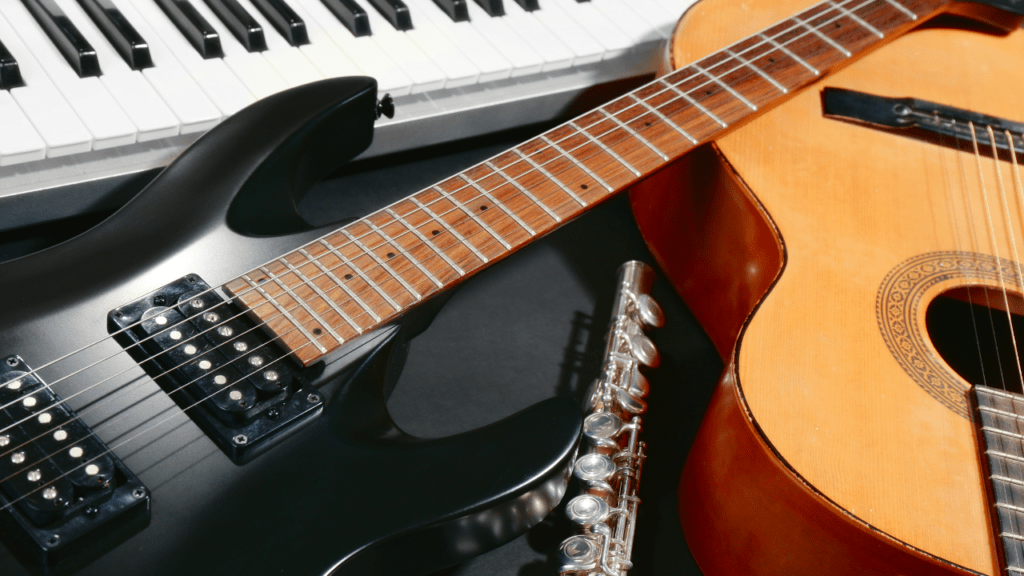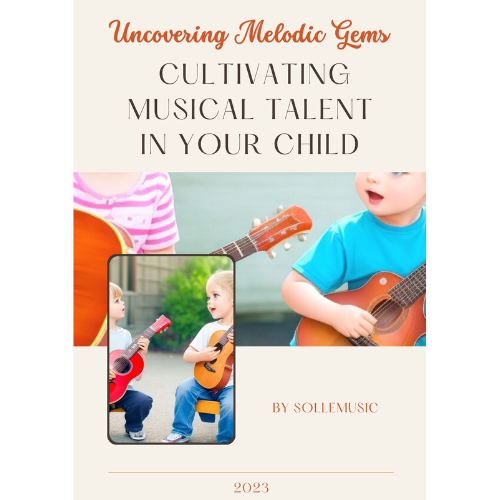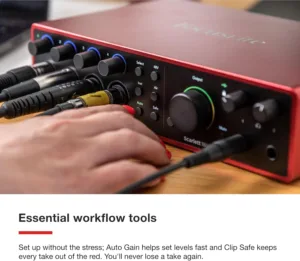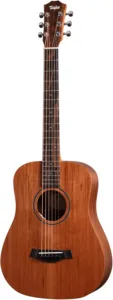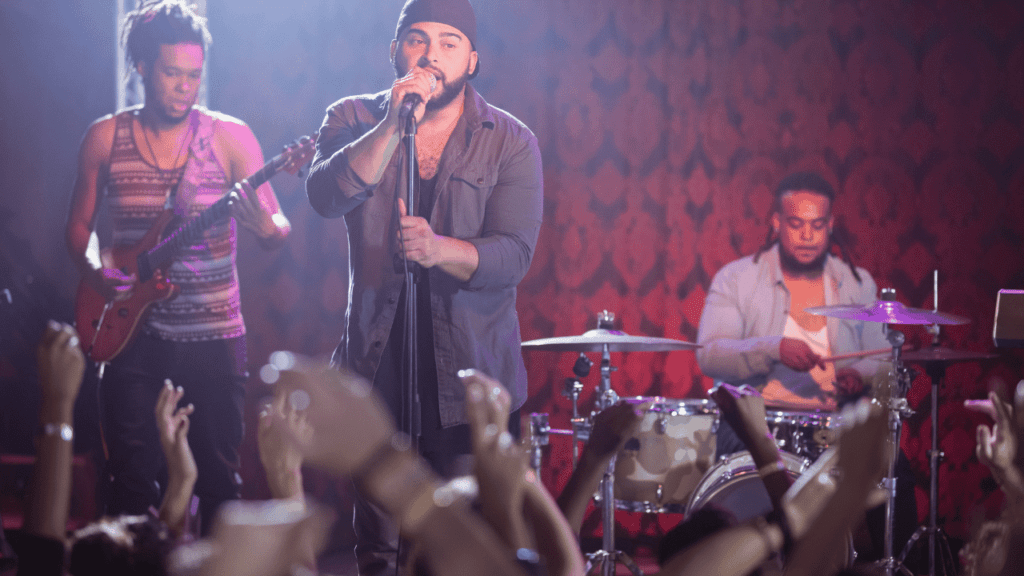
Introduction
Embarking on a journey to elevate your musical prowess is a thrilling endeavor that promises not only personal growth but also a deeper connection with your instrument. In the dynamic world of music, the quest to enhance your playing is a perpetual one; a commitment to constant refinement and exploration.
Understanding Your Instrument
Understanding your instrument is the foundational step toward becoming a proficient and expressive musician. It goes beyond the physicality of playing – it involves grasping the intricacies, nuances, and potential for artistic expression inherent in your chosen musical medium.
1. Instrument Anatomy: Knowing the Ins and Outs
Begin by intimately familiarizing yourself with the anatomy of your instrument. Whether it's a guitar, piano, trumpet, or any other musical tool, understanding the different components and their functions is crucial. Identify the various parts, from strings, keys, and valves to frets, bridges, and soundboards.
Knowing the anatomy enhances your technical proficiency. It allows you to troubleshoot issues, maintain your instrument effectively, and communicate more efficiently with instructors or fellow musicians. The better you understand the physical structure, the more effortlessly you can translate musical ideas into sound.
2. Tone Production: Mastering the Sonic Palette
Explore the spectrum of tones your instrument can produce. Experiment with varying degrees of pressure, bowing techniques, or embouchure control, depending on your instrument. Understand how changes in technique, articulation, and dynamics influence the timbre and character of the sound you produce.
Mastery of tone production extends beyond hitting the right notes. It involves developing control over the color and quality of the sound, enabling you to convey emotions and nuances in your playing. Take the time to explore the full sonic potential of your instrument through careful experimentation.
3. Technique and Mechanics: Building Muscle Memory
Developing sound technique is essential for musical fluency. Whether it's finger placement, bowing technique, or breath control, mastering the mechanics of your instrument lays the groundwork for advanced skills. Focus on proper posture, hand positioning, and coordination to ensure efficiency in your playing.
Consistent, deliberate practice is key to building muscle memory. Through repetition, your body learns the physical patterns required for fluid and accurate execution. As these movements become second nature, you can direct more attention to musical interpretation and expression.
4. Instrument-Specific Techniques: Unveiling Specialized Skills
Each instrument has its set of specialized techniques that contribute to its unique character. String players may explore pizzicato, harmonics, or double stops. Brass and woodwind players might delve into articulation styles, trills, and multiphonics. Drummers may focus on rudiments and various striking techniques.
Dedicating time to master instrument-specific techniques broadens your playing palette. It introduces variety and versatility, allowing you to adapt to different musical genres and contexts. Embrace these techniques as tools for creative expression and a means to push the boundaries of traditional playing.
5. Instrument History and Repertoire: Connecting with Tradition
Understand the historical context of your instrument and its repertoire. Explore the evolution of musical styles and genres, noting how they influenced the development of your instrument. Study the works of prominent composers and performers associated with your musical tradition.
Connecting with the historical and cultural roots of your instrument enriches your appreciation and interpretation of music. It provides context for the pieces you play and deepens your understanding of the stylistic nuances embedded in the repertoire.
In Summary: A Holistic Approach to Mastery
Understanding your instrument is a holistic journey encompassing technical proficiency, sonic exploration, and a connection to musical heritage. Delve into the physicality of your instrument, refine your technique, and explore its expressive capabilities. By embracing the multifaceted aspects of your chosen medium, you not only master the mechanics but also unlock the artistic potential that makes your musical journey truly transformative.
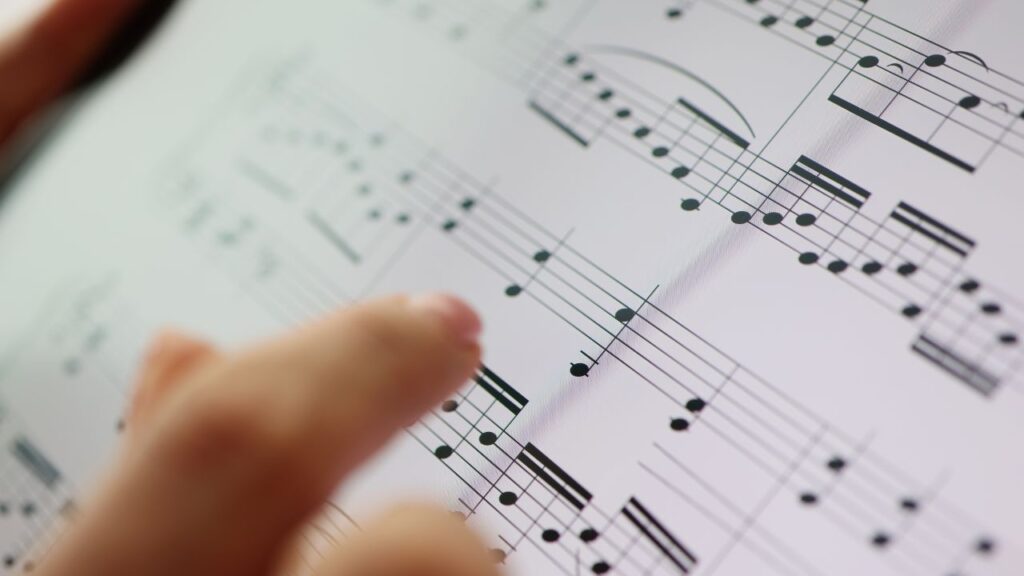
Investing in Education
Formal Music Education
Structured education serves as a cornerstone for anyone aspiring to elevate their musical prowess. Enrolling in music schools or engaging in private lessons provides a structured and guided approach to learning, offering valuable insights and personalized instruction tailored to individual needs.
1. Music Schools: A Comprehensive Learning Experience
Music schools are immersive environments where aspiring musicians can deeply engage with their craft. Beyond the instrument-specific lessons, students receive a comprehensive education encompassing music theory, history, composition, and ensemble playing.
In a music school setting, students are exposed to a diverse range of musical genres and styles. This exposure fosters versatility, encouraging musicians to appreciate and integrate elements from various traditions into their playing. Moreover, the collaborative nature of ensemble performances hones not only individual skills but also the ability to work harmoniously within a musical community.
2. Private Lessons: Personalized Mentorship
Private lessons offer a more intimate and personalized approach to learning. Working closely with an experienced instructor allows for tailored guidance, addressing specific strengths and weaknesses. This one-on-one mentorship fosters a deeper understanding of individual musical goals and provides immediate feedback for continuous improvement.
Private lessons are an opportunity for musicians to explore their unique artistic voice. Instructors can help students uncover their musical identity, offering insights on interpretation, expression, and stylistic nuances. This personalized mentorship goes beyond technical instruction, guiding students on their artistic journey.
Self-Directed Learning
Complementing formal education, self-directed learning empowers musicians to take control of their learning path. Utilizing online resources, tutorials, and practice tools, musicians can customize their learning experience to align with their goals and preferences.
1. Online Courses and Tutorials: Global Access to Expertise
In the digital age, online platforms have democratized access to music education. Courses on platforms like Coursera, Berklee Online, and others provide global access to expert instruction. These courses cover a spectrum of topics, from fundamental music theory to advanced instrumental techniques and even music production.
Tutorials on platforms like YouTube offer a wealth of free resources. Musicians can explore tutorials tailored to their instrument, musical genre, or specific technique. The abundance of online content allows for continuous learning and exposure to diverse perspectives.
2. Practice Tools and Apps: Enhancing Skills Independently
Practice tools and apps contribute to the self-directed learning journey. Metronome apps, ear training tools, and virtual accompaniment platforms assist musicians in enhancing their skills independently. These tools not only make practice sessions more engaging but also provide valuable feedback, aiding in tracking progress and identifying areas for improvement.
Balancing Formal Education and Self-Directed Learning
The synergy between formal education and self-directed learning is powerful. While formal education provides structure, mentorship, and a comprehensive curriculum, self-directed learning offers flexibility, autonomy, and a vast array of online resources. Striking a balance between the two ensures a well-rounded education that is both disciplined and creatively expansive.
In Summary: A Holistic Approach to Musical Growth
Investing in education, whether through formal institutions or self-directed avenues, is a dynamic and continuous process. The combination of structured learning environments, personalized mentorship, and independent exploration equips musicians with a diverse skill set and a deep understanding of their craft. This holistic approach to musical education lays the foundation for a lifelong journey of growth, creativity, and mastery.
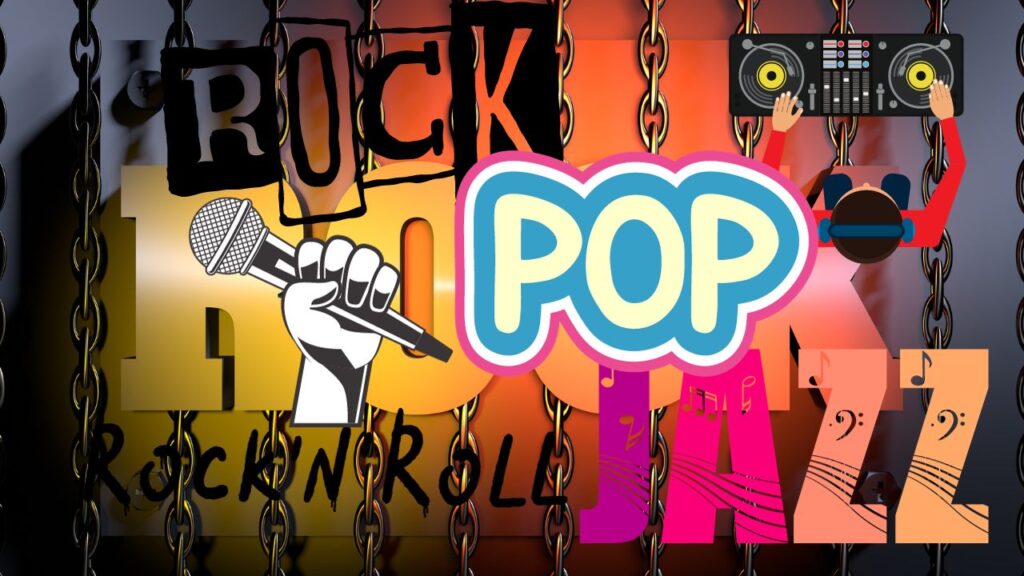
Embracing Diverse Musical Styles
The Art of Versatility
To truly elevate your musical craft, one must embrace the art of versatility. Diving into diverse musical styles is not just an exercise in expanding your repertoire; it's a transformative journey that enriches your understanding of music, hones your adaptability, and deepens your artistic expression.
1. Broadening Your Musical Horizons: Exploring Beyond Comfort Zones
The first step in embracing diverse musical styles is to broaden your musical horizons. Step out of your comfort zone and explore genres beyond your primary focus. If you're a classically trained pianist, delve into jazz; if you're a rock guitarist, try your hand at blues. This exploration introduces you to different scales, rhythms, and tonalities, fostering a more comprehensive understanding of musical language.
2. Cross-Genre Influences: Creating a Unique Musical Identity
As you venture into diverse styles, recognize the power of cross-genre influences. Blend elements from various genres to create a unique musical identity. For example, infuse jazz improvisation techniques into your classical compositions or incorporate classical harmonies into your pop arrangements. These cross-genre experiments not only showcase your creativity but also contribute to the evolution of your personal style.
The Importance of Versatility
Versatility in musical styles is not just about being able to play different genres; it's about adapting your playing style to suit the essence of each genre authentically. Each style carries its own set of conventions, expressions, and emotions. Versatility allows you to navigate these nuances fluently, making you a well-rounded and adaptable musician.
Cross-Genre Influences
Incorporate elements from various genres into your playing. Blend classical techniques with contemporary styles or infuse jazz improvisation into your compositions. Cross-genre influences create a unique fusion, showcasing your creativity and expanding your musical palette.
1. Experimenting with Styles: Breaking Musical Boundaries
True versatility involves active experimentation with different styles. Take the opportunity to experiment with the elements that define each genre. This might include exploring intricate fingerpicking patterns in folk, mastering syncopated rhythms in funk, or understanding the art of phrasing in blues.
Through experimentation, you not only acquire technical skills specific to each genre but also gain insights into the cultural and historical contexts that shape musical styles. This deepened understanding contributes to a more authentic and informed interpretation when playing across diverse genres.
2. Integrating World Music Influences: A Global Perspective
Expand your musical palette by integrating world music influences. Explore the rich traditions of various cultures, incorporating elements of Latin, African, Asian, or Middle Eastern music into your playing. The rhythmic complexities, unique scales, and melodic structures found in world music can add layers of sophistication to your compositions and improvisations.
The Role of Versatility in Collaboration
Versatility is particularly advantageous in collaborative settings. Musicians who can seamlessly transition between styles are valuable assets in diverse ensembles. Whether participating in jam sessions, joining a band with eclectic influences, or collaborating on cross-genre projects, a versatile musician brings adaptability and creativity to the musical dialogue.
1. Jamming and Collaborative Sessions: A Playground for Creativity
Engage in jamming sessions with musicians from different backgrounds. Jamming not only sharpens your improvisational skills but also exposes you to diverse musical perspectives. The spontaneity of collaborative sessions fosters a dynamic exchange of ideas, pushing you to think on your feet and adapt your playing style to complement others.
2. Cross-Genre Collaboration: A Fusion of Artistic Vision
Collaborate with musicians from genres outside your comfort zone. This cross-genre collaboration sparks innovative ideas, resulting in a fusion of artistic visions. The convergence of different styles creates a unique sonic landscape that transcends traditional boundaries, offering audiences a fresh and exhilarating musical experience.
In Summary: A Musical Journey of Discovery
Embracing diverse musical styles is not just a means of expanding your repertoire; it's a transformative journey of musical discovery. The art of versatility not only enriches your playing but also broadens your musical perspective, making you a more adaptable, expressive, and innovative musician. Whether you're a classical pianist infusing jazz into your compositions or a folk guitarist experimenting with electronic elements, the journey of embracing diverse musical styles is an ongoing exploration that adds depth and vibrancy to your musical odyssey.
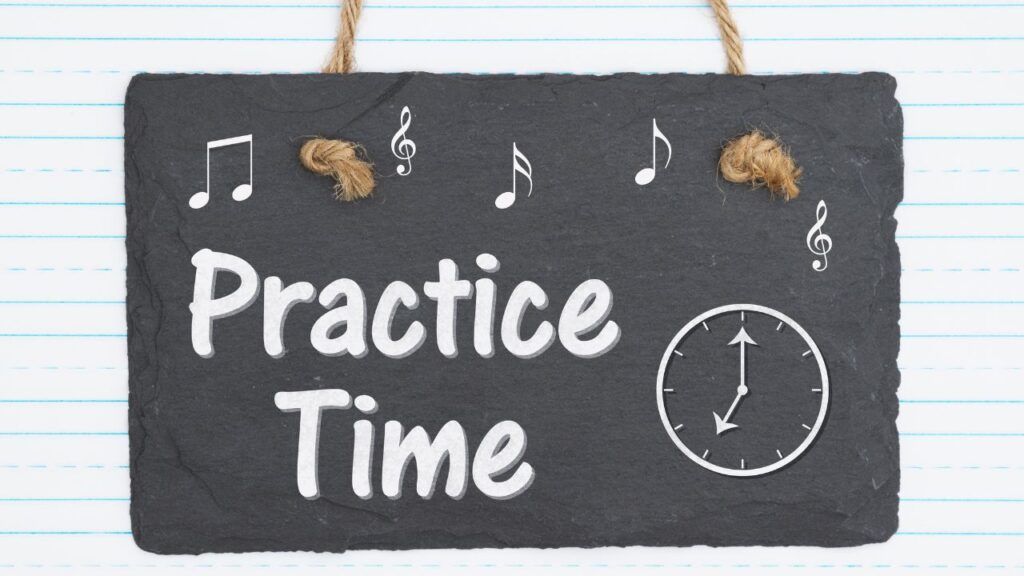
The Role of Practice and Discipline
Unveiling the Keystone to Musical Mastery
In the intricate tapestry of musical proficiency, the role of practice and discipline stands as the linchpin that binds skill acquisition, artistic expression, and continuous improvement. To truly master an instrument and navigate the vast landscape of musical expression, one must embrace a dedicated and disciplined approach to practice. Let's embark on a journey into the nuances of this essential component of musical growth.
1. Setting the Stage with Clear Objectives: A Musical Compass
Commencing your practice session without clear objectives is akin to setting sail without a compass. Establish specific goals for each practice session, outlining what you aim to achieve. Whether it's conquering a challenging passage, refining your technique, or memorizing a complex piece, defined objectives serve as your musical compass, guiding your focus and energy.
2. Breaking Down Complexity: The Art of Incremental Progress
Mastery often lies in the meticulous deconstruction of complex tasks. When faced with intricate pieces or challenging technical passages, break them down into smaller, more manageable segments. This approach not only makes the learning process less daunting but also allows for targeted improvement. Like assembling a puzzle, each small piece contributes to the larger, more intricate musical picture.
3. Consistency Trumps Duration: The Daily Ritual of Improvement
Consistency in practice, rather than the sheer duration of each session, is the key to unlocking musical potential. Regular, shorter practice sessions have a cumulative effect that surpasses sporadic, marathon efforts. Committing to daily practice builds muscle memory, reinforces learning, and ensures steady, sustainable progress over time.
Overcoming Plateaus and Navigating Challenges
In any musical journey, plateaus are inevitable, and challenges are constant companions. The manner in which musicians confront these plateaus and challenges defines the trajectory of their growth.
1. Embracing Discomfort: The Catalyst for Artistic Evolution
Plateaus and challenges are signposts on the road to musical mastery. Rather than viewing them as impediments, embrace them as opportunities for growth. Delve into areas that feel uncomfortable or unfamiliar. It's within these realms of discomfort that artistic evolution often finds its catalyst. Overcoming challenges propels musicians beyond their comfort zones, facilitating profound musical development.
2. Variety in Practice: The Antidote to Monotony
Monotonous practice routines can stifle creativity and impede progress. Injecting variety into your practice sessions stimulates engagement and progress. Alternate between technical exercises, repertoire building, and creative exploration. This dynamic approach not only wards off monotony but also keeps your musical journey exciting and invigorating.
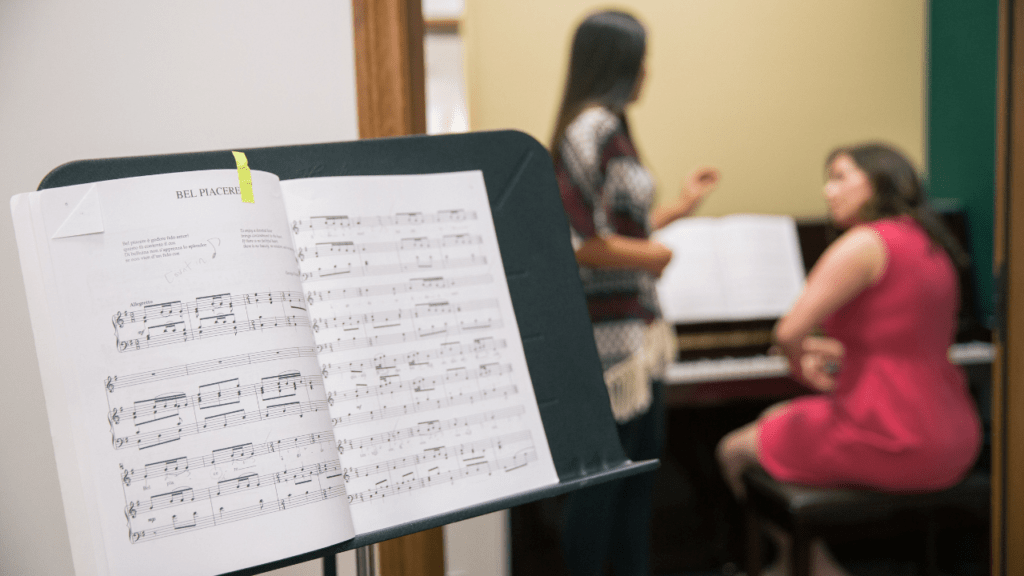
Leveraging Technology for Enhanced Learning
In the contemporary landscape of music education, technology serves as a powerful ally for aspiring musicians. Integrating digital tools into your practice routine amplifies learning possibilities and provides valuable resources for improvement.
1. Incorporating Digital Tools: Expanding Practice Horizons
Embrace the myriad digital tools available for musicians. Apps designed for music theory, ear training, and instrument-specific exercises offer interactive learning experiences. These tools provide instant feedback, track progress, and introduce an element of gamification to the learning process. Integrating technology into your practice routine adds a modern dimension to your musical education.
2. Recording and Analyzing Performances: A Mirror to Artistic Progress
Recording your performances is not just a documentation tool; it's a mirror reflecting your artistic evolution. Regularly record and critically analyze your playing. Listen for nuances in timing, dynamics, and tone quality. This objective self-evaluation, facilitated by technology, becomes a potent tool for refining technique, identifying areas for improvement, and tracking progress over time.
Cultivating a Creative Mindset: Beyond Technical Proficiency
Nurturing a creative mindset is the secret ingredient that elevates a musician from a skilled player to an artist. Immersing yourself in various forms of art, experimenting with improvisation, and fostering a mindset of creative exploration are essential components of this transformative journey.
1. Immerse Yourself in Artistic Inspiration: A Tapestry of Influence
Draw inspiration from a diverse array of artistic disciplines beyond music. Explore visual arts, literature, dance, or any form of creative expression. Cross-disciplinary inspiration enriches your creative palette, infusing your playing with unique perspectives and influences. A well-rounded artistic sensibility contributes to a more profound and authentic expression in your music.
2. Experiment with Improvisation: The Gateway to Spontaneous Creativity
Incorporate improvisation into your practice routine. Whether you're a classically trained musician exploring free-form improvisation or a jazz enthusiast refining your skills, improvisation fosters spontaneity and creativity. It liberates you from the constraints of written notation, allowing for personal expression and experimentation.
Collaboration and Jamming Sessions: A Gateway to Musical Community
Music, at its core, is a communal experience. Engaging in collaborative efforts, joining jamming sessions, and participating in musical communities not only broadens your musical perspective but also fosters a sense of shared creativity and camaraderie.
1. Engaging in Jamming Sessions: The Joy of Musical Dialogue
Jamming sessions are akin to musical dialogues, where spontaneity and creativity take center stage. Whether formalized with a band or informally with fellow musicians, jamming encourages real-time interaction and improvisation. Participating in such sessions enhances your ability to listen and respond dynamically, fostering a sense of musical camaraderie.
2. Collaboration with Other Musicians: A Tapestry of Learning
Collaborating with musicians from diverse backgrounds offers a tapestry of learning opportunities. Join ensembles, bands, or experimental projects that stretch your musical boundaries. Learning from the perspectives of other musicians exposes you to different playing styles, techniques, and approaches. Collaborative experiences contribute to your musical growth, providing fresh insights and broadening your artistic horizons.
The Importance of Live Performances: From Practice Room to Stage
Transitioning from the practice room to live performances is a pivotal step in a musician's journey. Live performances enhance stage presence, build a connection with the audience, and offer invaluable lessons in adapting to unpredictable situations.
1. From Practice Room to Stage: A Transformative Experience
Live performances bridge the gap between isolated practice sessions and the real-world application of musical skills. The stage introduces an element of unpredictability, demanding adaptability and resilience. Embracing live performances as transformative experiences not only enhances stage presence and builds confidence but also hones the ability to connect with an audience.
2. Managing Performance Anxiety: Harnessing Nervous Energy
Performance anxiety is a common companion for musicians. Developing strategies to manage stage fright, such as mindfulness techniques, deep breathing exercises, and positive visualization, transforms nervous energy into a powerful, engaging performance. Overcoming performance anxiety is not just about technique; it's about embracing the opportunity to share your musical narrative with authenticity and passion.
Conclusion: A Celebration of Musical Growth
As we draw the curtain on this exploration of the role of practice and discipline in musical growth, remember that this journey is a continuous celebration of passion, dedication, and boundless possibilities. Armed with newfound insights and strategies, you're equipped to navigate the ever-evolving landscape of musical mastery. The disciplined and intentional approach to practice is not just a means to an end; it's the rhythmic heartbeat that propels you forward in your musical odyssey.
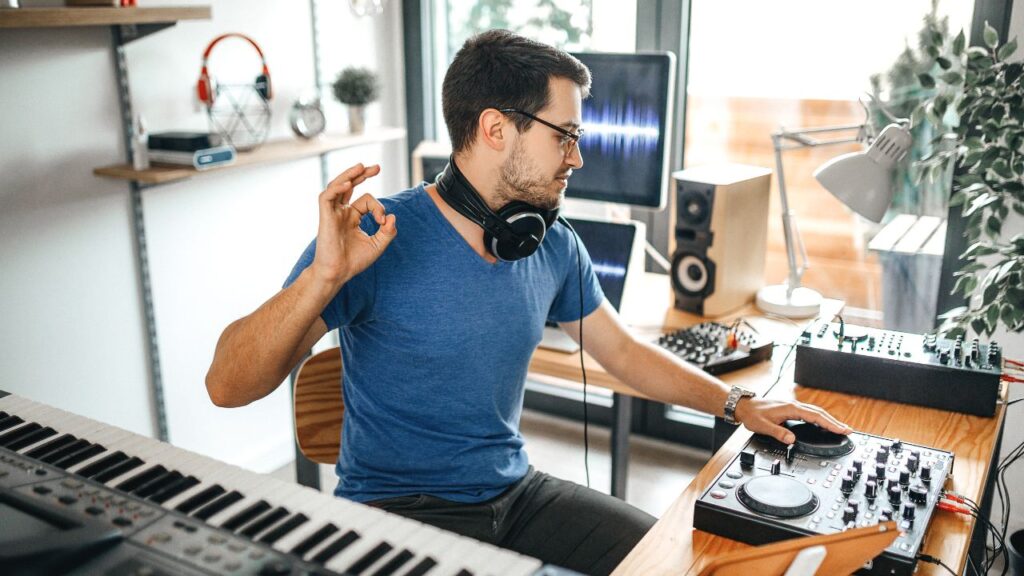
Utilizing Technology to Your Advantage
Navigating the Digital Landscape in Music Education
In the 21st century, technology has become an integral part of the musical landscape, offering a myriad of tools and resources to musicians at every skill level. Leveraging technology strategically can significantly enhance your learning experience, practice routine, and overall musical journey. Let's delve into the ways you can harness technology to your advantage on your path to musical mastery.
1. Incorporating Digital Tools: Expanding Practice Horizons
Embrace the multitude of digital tools available for musicians, ranging from mobile apps to specialized software. These tools cater to various aspects of music education, including theory, ear training, and instrument-specific exercises. Platforms like Yousician, for instance, offer interactive lessons that adapt to your skill level, providing immediate feedback and personalized learning experiences.
These digital tools not only make practice sessions more engaging but also offer a dynamic and interactive approach to learning. As you explore different apps and platforms, you'll find resources that align with your specific goals and preferences, whether you're focusing on improving your sight-reading, mastering scales, or enhancing your rhythm.
2. Recording and Analyzing Performances: A Mirror to Artistic Progress
Technology has democratized the recording process, allowing musicians to capture their performances easily. Whether using a simple smartphone or a professional recording setup, regularly recording your playing serves as a powerful tool for improvement. It provides a mirror to your artistic progress, allowing you to critically assess your performances.
Listening back to your recordings helps identify areas for improvement in timing, dynamics, and tone quality. It also facilitates a more objective evaluation of your playing. Additionally, recording your practice sessions allows you to track your progress over time, providing a tangible record of your musical journey.
3. Online Platforms for Learning: A Global Classroom
The advent of online learning platforms has revolutionized music education, offering access to world-class instruction from the comfort of your home. Platforms like Coursera, Berklee Online, and MasterClass provide courses taught by renowned musicians and educators. These courses cover a spectrum of topics, from music theory and composition to instrument-specific techniques and production.
Engaging with online courses not only broadens your musical knowledge but also exposes you to diverse teaching styles and perspectives. Whether you're a beginner seeking foundational knowledge or an advanced musician looking to refine your skills, online learning platforms offer a flexible and accessible avenue for continuous education.
4. Virtual Collaboration Tools: Connecting Musicians Worldwide
Collaboration is a cornerstone of musical growth, and technology has made global collaboration more accessible than ever. Virtual collaboration tools, such as Zoom, Skype, or collaboration platforms like Endlesss, enable musicians to connect and create together in real-time, regardless of geographical distances.
Engaging in virtual collaborations expands your musical network, exposes you to different genres and styles, and fosters a sense of community. Whether participating in online jam sessions, collaborating on a digital project, or joining virtual ensembles, these tools enable you to share your musical talents with a global audience.
5. Practice Apps for Skill Enhancement: A Personalized Approach
Practice apps cater to specific aspects of skill development, providing targeted exercises and feedback. Metronome apps, for instance, help you refine your sense of timing and rhythm, while apps like Perfect Ear offer comprehensive ear training exercises. These apps often allow for customization, letting you tailor your practice routine to focus on your individual needs and areas for improvement.
Incorporating practice apps into your routine adds a layer of interactivity and engagement. Many of these apps gamify the learning process, turning practice sessions into enjoyable and rewarding experiences. As you progress, you can explore more advanced apps that align with your evolving skill level and goals.
6. Virtual Instruments and Digital Audio Workstations (DAWs): A Sonic Playground
For composers, producers, and those exploring music production, virtual instruments and digital audio workstations (DAWs) open up a vast sonic playground. Platforms like Ableton Live, Logic Pro, or FL Studio provide a virtual environment where you can create, compose, and produce music.
Experimenting with virtual instruments allows you to explore a wide range of sounds and textures. Whether you're crafting original compositions, arranging covers, or experimenting with electronic music, DAWs empower you to bring your musical ideas to life with unprecedented flexibility and creative freedom.
7. Social Media and Online Communities: A Hub for Inspiration
Social media platforms and online communities serve as hubs for musical inspiration and collaboration. Platforms like Instagram, YouTube, and SoundCloud allow you to share your performances, connect with other musicians, and discover a wealth of musical content.
Engaging with online communities provides opportunities for feedback, collaboration, and exposure to diverse musical perspectives. Whether you're sharing your own playing, learning from others, or participating in discussions, these platforms foster a sense of belonging within the global music community.
8. Augmented Reality (AR) and Virtual Reality (VR): Immersive Learning Experiences
Emerging technologies like augmented reality (AR) and virtual reality (VR) are increasingly being integrated into music education. AR apps may provide interactive sheet music, while VR experiences offer immersive virtual environments for learning and performance. These technologies add a layer of depth and engagement, creating
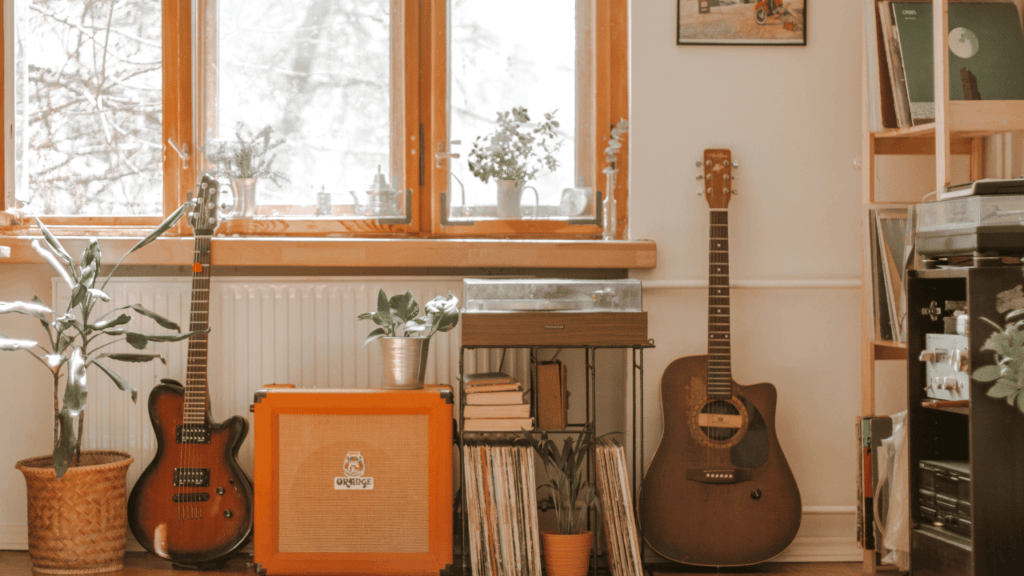
Cultivating a Creative Mindset
Unleashing Artistic Expression in Your Musical Journey
In the realm of music, technical proficiency alone does not suffice; it is the infusion of creativity that elevates a musician from a mere player to an artist. Cultivating a creative mindset is an essential journey for musicians seeking to not only play notes but to craft a unique and expressive musical narrative. Let's explore the avenues through which you can foster and unleash your creativity on this transformative musical odyssey.
1. Immerse Yourself in Artistic Inspiration: Beyond Musical Boundaries
The wellspring of creativity often lies beyond the confines of your chosen instrument or musical genre. Immersing yourself in various forms of art, be it visual arts, literature, dance, or other creative expressions, enriches your creative palette. Consider how a painting's colors might influence the mood of a piece, or how the rhythm of a poem can inspire your phrasing. Cross-disciplinary inspiration expands your artistic horizons and infuses your playing with unique perspectives.
2. Experiment with Improvisation: The Gateway to Spontaneous Creativity
Incorporating improvisation into your practice routine is a powerful means of fostering spontaneous creativity. Whether you're a classically trained musician exploring free-form improvisation or a jazz enthusiast refining your skills, improvisation liberates you from the constraints of written notation. It allows for personal expression, experimentation, and the development of a unique musical voice. Through improvisation, you learn to trust your instincts, break free from rigid structures, and explore the vast landscape of musical possibilities.
3. Cross-Genre Exploration: Creating a Musical Fusion
Break down the walls between musical genres and embark on a journey of cross-genre exploration. Infusing elements from diverse genres into your playing creates a musical fusion that reflects your eclectic influences. For example, experiment with incorporating jazz phrasing into classical pieces, or integrate electronic elements into acoustic compositions. This cross-genre experimentation not only showcases your creativity but also contributes to the evolution of your personal musical style.
4. Embrace Discomfort: A Catalyst for Artistic Growth
Creative breakthroughs often emerge when you step outside your comfort zone. Embrace discomfort as a catalyst for artistic growth. If a particular style or technique feels challenging, it's a sign that you're pushing your artistic boundaries. This discomfort propels you into new territories, allowing you to discover novel approaches, sounds, and expressions. Creative growth thrives in the fertile ground of the unknown.
5. Variety in Practice: Stimulating Creative Progress
Monotony can stifle creativity. Inject variety into your practice routine to stimulate creative progress. Rotate between technical exercises, repertoire building, and creative exploration. Experiment with different playing techniques, explore unconventional sounds, and challenge traditional musical norms. The variety in your practice routine not only keeps sessions engaging but also encourages a mindset of continuous creative exploration.
6. Collaborate with Other Musicians: Learning through Exchange
Collaboration is a potent catalyst for creativity. Engage with musicians from diverse backgrounds, join ensembles, or participate in collaborative projects. Learning from the perspectives of other musicians exposes you to different playing styles, techniques, and approaches. Collaborative experiences not only contribute to your musical growth but also provide fresh insights and ideas. The exchange of creative energy in a collaborative setting can spark innovative approaches and expand your artistic horizons.
7. Develop a Personal Musical Identity: Authentic Expression
Cultivating a creative mindset involves developing a personal musical identity. What sets you apart as a musician? What themes, emotions, or stories do you want to convey through your playing? Reflect on these questions and consciously infuse your personality into your music. Whether it's through unique interpretations, original compositions, or signature stylistic elements, authentic expression contributes to the development of a distinct musical voice.
8. Experiment with Extended Techniques: Pushing Boundaries
Explore extended techniques on your instrument as a means of pushing creative boundaries. These techniques go beyond conventional playing methods and often result in unconventional sounds. String players might experiment with col legno (playing with the wood of the bow), brass players may explore multiphonics, and percussionists might delve into prepared percussion. Experimenting with these techniques not only expands your sonic palette but also opens doors to new expressive possibilities.
9. Embrace the Unpredictable: Improvisational Exercises
Incorporate improvisational exercises into your practice routine to cultivate adaptability and spontaneity. Set aside dedicated time for free-form improvisation, allowing yourself to explore different scales, modes, and rhythms without the constraints of written music. This kind of creative exercise enhances your ability to think on your feet, respond intuitively, and develop a more fluid and dynamic approach to your instrument.
10. Seek Artistic Feedback: Continuous Learning
Engage with other musicians, teachers, or mentors to seek artistic feedback. Constructive feedback provides valuable insights into your artistic choices, interpretations, and expressions. This external perspective not only helps refine your playing but also encourages a mindset of continuous learning and growth. Be open to feedback, embrace constructive criticism, and view it as a catalyst for refining and enhancing your creative approach.
Conclusion: A Journey of Endless Discovery
Cultivating a creative mindset is not a destination but a perpetual journey of endless discovery and artistic evolution. As you explore, experiment, and infuse your musical journey with creativity, you embark on a path that transcends technical proficiency, allowing you to craft a narrative uniquely your own. In the realm of music, where each note is a brushstroke on the canvas of emotion, cultivating a creative mindset becomes the brush with which you paint your musical masterpiece.

The Importance of Performance
Elevating Your Artistry from Practice Room to Stage
In the intricate tapestry of a musician's journey, the transition from the solitary practice room to the vibrant stage is a pivotal chapter that transcends technical proficiency and delves into the realm of artistic expression. The importance of performance extends far beyond showcasing your skills—it becomes a transformative experience that refines your craft, enhances your stage presence, and establishes a profound connection with your audience. Let's explore why live performances are integral to your musical odyssey.
1. From Practice Room to Stage: Bridging the Gap
Live performances serve as a bridge, connecting the meticulous hours spent in the practice room to the real-world application of your musical skills. The stage introduces an element of unpredictability—variables such as acoustics, audience dynamics, and the energy of the venue. Embracing live performances is not just about showcasing your technical prowess; it's about adapting to these variables, developing resilience, and learning to navigate the unique challenges and joys that the stage presents.
2. Managing Performance Anxiety: Turning Nervous Energy into Power
Performance anxiety is a common hurdle for musicians, regardless of skill level. The stage often amplifies nervous energy, and learning to manage this anxiety is a crucial aspect of live performance. Techniques such as mindfulness, deep breathing exercises, and positive visualization can help transform nervous energy into a powerful and engaging performance. Overcoming performance anxiety is not just about technique—it's about embracing the opportunity to share your musical narrative with authenticity and passion.
3. Connecting with Your Audience: A Shared Musical Journey
The stage is a platform for shared experiences. As a performer, you have the unique ability to guide your audience through a sonic journey. The interplay between performer and audience creates a symbiotic relationship, where energy flows in both directions. Live performances provide the space for emotional connection, allowing your audience to experience the depth and nuances of your musical expression. This shared experience can be profoundly moving, creating lasting memories for both performer and listener.
4. Enhancing Stage Presence: The Visual Component of Music
Beyond the auditory experience, live performances bring a visual dimension to your music. Stage presence encompasses how you carry yourself, engage with the audience, and convey the emotional essence of your performance. Developing a compelling stage presence involves intentional gestures, eye contact, and body language that complement the sonic narrative. It transforms your music into a holistic and immersive experience for the audience.
5. Fostering Confidence and Resilience: Lessons from the Stage
The stage is a dynamic teacher, imparting lessons that extend beyond musical technique. Performing in front of an audience cultivates confidence and resilience. Every live performance, whether a triumph or a challenge, contributes to your artistic growth. Learning to navigate mistakes, unexpected situations, and the ebb and flow of audience reactions builds a resilience that translates into a more robust and adaptable musician.
6. Showcasing Artistic Interpretation: Beyond the Written Score
Live performances provide a platform to showcase your artistic interpretation of a piece. While practice allows for refining technical aspects, it's on the stage that you breathe life into the music, infusing it with your unique perspective and emotional interpretation. The spontaneity of live performance allows for moments of artistic freedom, enabling you to convey the subtleties and nuances that might not be captured in a recorded or written rendition.
7. Collaborative Possibilities: Shared Creativity on Stage
Live performances often involve collaboration, whether within a band, ensemble, or as part of a larger musical production. Collaborative opportunities on stage bring a unique set of challenges and rewards. Navigating the synergy with fellow musicians, responding to cues in real-time, and collectively creating a sonic tapestry contribute to a shared creativity that elevates the performance to new heights.
8. Feedback for Growth: A Mirror to Artistic Development
Live performances serve as a mirror reflecting your artistic development. Audience reactions, feedback, and the overall energy of a performance offer valuable insights into your strengths and areas for improvement. Every stage experience becomes a feedback loop, guiding your ongoing journey of refinement and growth as a musician.
9. Celebrating Musical Achievements: Milestones on the Journey
Performing live provides opportunities to celebrate musical achievements, both big and small. Whether it's a debut recital, a concert with a prestigious ensemble, or a local gig, each performance becomes a milestone on your musical journey. Celebrating these achievements, regardless of scale, reinforces the sense of purpose and fulfillment that music brings to your life.
10. Transcending Boundaries: Cultural Exchange Through Performance
For musicians engaged in cross-cultural or international performances, the stage becomes a powerful tool for cultural exchange. Music, as a universal language, has the ability to transcend boundaries and connect people from diverse backgrounds. Engaging in performances that celebrate different musical traditions fosters mutual understanding and appreciation, contributing to a global dialogue through the language of music.
Conclusion: A Continual Evolution
In conclusion, the importance of performance in a musician's journey cannot be overstated. The stage is not just a destination but a continuum—a space where technical prowess meets artistic expression, where resilience is honed, and where the shared language of music creates profound connections. Embrace the stage as a transformative arena, and let each performance be a chapter in the continual evolution of your musical narrative.
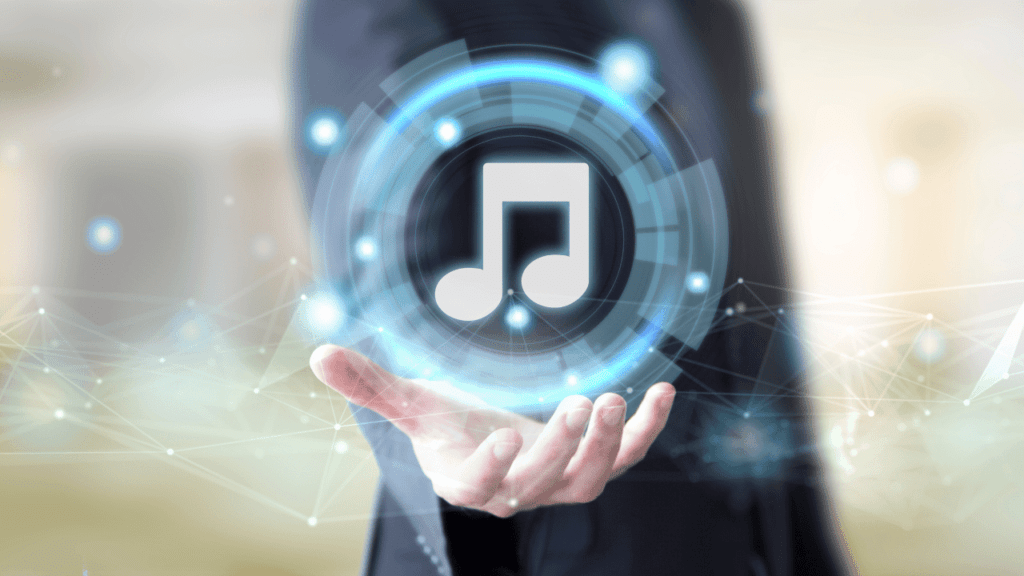
Utilizing Technology to Your Advantage
Revolutionizing Musical Learning and Practice
In the digital age, technology has become a dynamic force in reshaping the landscape of music education and practice. Musicians now have a wealth of tools and resources at their fingertips, offering innovative ways to enhance learning, streamline practice sessions, and foster overall musical growth. Let's explore the multifaceted ways in which technology can be harnessed to your advantage on your journey to musical excellence.
1. Incorporating Digital Tools: Expanding Practice Horizons
Embrace the multitude of digital tools available for musicians, ranging from mobile apps to specialized software. These tools cater to various aspects of music education, including theory, ear training, and instrument-specific exercises. Apps like Yousician provide interactive lessons that adapt to your skill level, offering immediate feedback and personalized learning experiences.
Digital tools not only make practice sessions more engaging but also offer a dynamic and interactive approach to learning. As you explore different apps and platforms, you'll find resources that align with your specific goals and preferences, whether you're focusing on improving your sight-reading, mastering scales, or enhancing your rhythm.
2. Recording and Analyzing Performances: A Mirror to Artistic Progress
Technology has democratized the recording process, allowing musicians to capture their performances easily. Whether using a simple smartphone or a professional recording setup, regularly recording your playing serves as a powerful tool for improvement. It provides a mirror to your artistic progress, allowing you to critically assess your performances.
Listening back to your recordings helps identify areas for improvement in timing, dynamics, and tone quality. This objective self-evaluation, facilitated by technology, becomes a potent tool for refining technique, identifying areas for improvement, and tracking progress over time.
3. Online Platforms for Learning: A Global Classroom
The advent of online learning platforms has revolutionized music education, offering access to world-class instruction from the comfort of your home. Platforms like Coursera, Berklee Online, and MasterClass provide courses taught by renowned musicians and educators. These courses cover a spectrum of topics, from music theory and composition to instrument-specific techniques and production.
Engaging with online courses not only broadens your musical knowledge but also exposes you to diverse teaching styles and perspectives. Whether you're a beginner seeking foundational knowledge or an advanced musician looking to refine your skills, online learning platforms offer a flexible and accessible avenue for continuous education.
4. Virtual Collaboration Tools: Connecting Musicians Worldwide
Collaboration is a cornerstone of musical growth, and technology has made global collaboration more accessible than ever. Virtual collaboration tools, such as Zoom, Skype, or collaboration platforms like Endlesss, enable musicians to connect and create together in real-time, regardless of geographical distances.
Engaging in virtual collaborations expands your musical network, exposes you to different genres and styles, and fosters a sense of community. Whether participating in online jam sessions, collaborating on a digital project, or joining virtual ensembles, these tools enable you to share your musical talents with a global audience.
5. Practice Apps for Skill Enhancement: A Personalized Approach
Practice apps cater to specific aspects of skill development, providing targeted exercises and feedback. Metronome apps, for instance, help you refine your sense of timing and rhythm, while apps like Perfect Ear offer comprehensive ear training exercises. These apps often allow for customization, letting you tailor your practice routine to focus on your individual needs and areas for improvement.
Incorporating practice apps into your routine adds a layer of interactivity and engagement. Many of these apps gamify the learning process, turning practice sessions into enjoyable and rewarding experiences. As you progress, you can explore more advanced apps that align with your evolving skill level and goals.
6. Virtual Instruments and Digital Audio Workstations (DAWs): A Sonic Playground
For composers, producers, and those exploring music production, virtual instruments and digital audio workstations (DAWs) open up a vast sonic playground. Platforms like Ableton Live, Logic Pro, or FL Studio provide a virtual environment where you can create, compose, and produce music.
Experimenting with virtual instruments allows you to explore a wide range of sounds and textures. Whether you're crafting original compositions, arranging covers, or experimenting with electronic music, DAWs empower you to bring your musical ideas to life with unprecedented flexibility and creative freedom.
7. Social Media and Online Communities: A Hub for Inspiration
Social media platforms and online communities serve as hubs for musical inspiration and collaboration. Platforms like Instagram, YouTube, and SoundCloud allow you to share your performances, connect with other musicians, and discover a wealth of musical content.
Engaging with online communities provides opportunities for feedback, collaboration, and exposure to diverse musical perspectives. Whether you're sharing your own playing, learning from others, or participating in discussions, these platforms foster a sense of belonging within the global music community.
8. Augmented Reality (AR) and Virtual Reality (VR): Immersive Learning Experiences
Emerging technologies like augmented reality (AR) and virtual reality (VR) are increasingly being integrated into music education. AR apps may provide interactive sheet music, while VR experiences offer immersive virtual environments for learning and performance. These technologies add a layer of depth and engagement, creating immersive and interactive learning experiences.
Conclusion: A Technological Symphony
In conclusion, the integration of technology into music education and practice has ushered in a new era of possibilities for musicians. From interactive learning platforms to virtual collaboration tools and immersive experiences, technology offers a symphony of resources to enhance your musical journey. Embrace these tools with curiosity and creativity, and let technology be a harmonious companion in your pursuit of musical excellence.
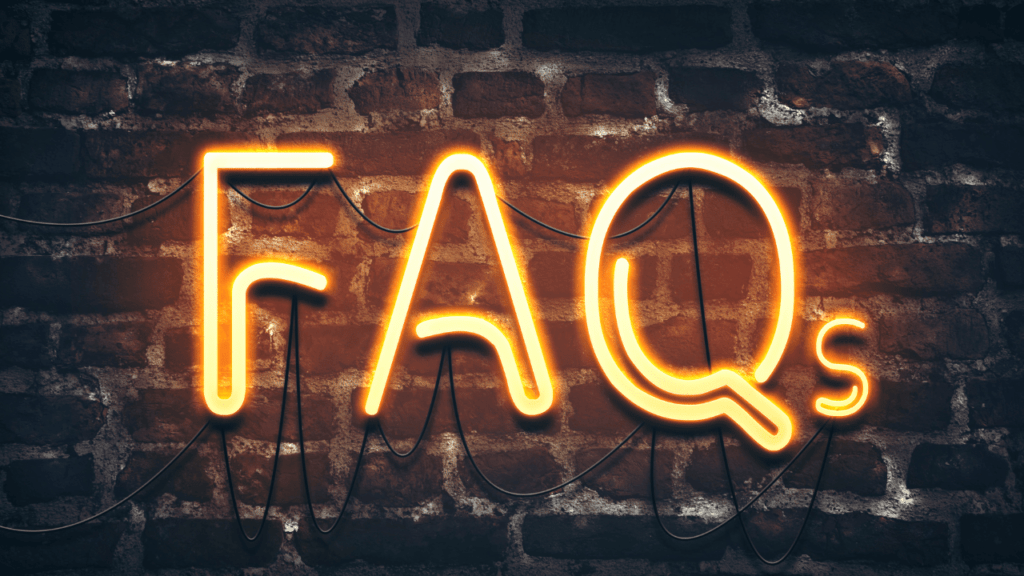
FAQs: Your Musical Journey Unveiled
Answering Common Questions to Illuminate Your Path in Music
Embarking on a musical journey is a unique and personal endeavor, filled with excitement, challenges, and a multitude of questions. Whether you're a novice eager to pick up an instrument or an experienced musician navigating the complexities of performance and creativity, your musical odyssey is marked by curiosity. This FAQ section aims to address common queries, offering insights and guidance to illuminate your path and enrich your experience on this melodic adventure.
Q1: How Do I Choose the Right Instrument to Learn?
Answer: Selecting the right instrument is a personal decision that depends on your interests, preferences, and physical considerations. Consider the sounds that resonate with you, the genres you're passionate about, and the instrument's practicality for your lifestyle. If unsure, exploring different instruments at a music store or attending live performances can provide valuable insights.
Q2: How Can I Overcome Performance Anxiety?
Answer: Performance anxiety is a common challenge. Practice performing in front of friends or family to build confidence gradually. Incorporate mindfulness and deep-breathing exercises into your pre-performance routine. Embrace nerves as a natural part of the process, and view each performance as an opportunity for growth.
Q3: What's the Importance of Music Theory in Learning an Instrument?
Answer: Music theory is the backbone of musical understanding. It helps you read and interpret sheet music, understand the structure of compositions, and communicate effectively with other musicians. While practical skills are crucial, a solid foundation in music theory enhances your overall musicianship.
Q4: How Can I Balance Technical Practice and Creative Exploration?
Answer: Striking a balance between technical practice and creative exploration is essential. Design a practice routine that includes scales, exercises, and repertoire for technical development. Allocate separate time for improvisation, experimentation, and exploring new musical ideas to nurture your creative side.
Q5: What's the Role of Collaborations in Musical Growth?
Answer: Collaborations are invaluable for musical growth. They expose you to different styles, perspectives, and techniques. Engaging with other musicians fosters communication and adaptability, enhancing your overall musicianship. Collaborative experiences can be both enriching and inspiring.
Q6: How Can I Find Opportunities to Perform Live?
Answer: Explore local open mic nights, community events, or join musical groups and ensembles. Networking with fellow musicians, music teachers, and local venues can also lead to performance opportunities. Consider creating your own opportunities, such as organizing house concerts or collaborating with other artists.
Q7: What Strategies Can Help Me Practice Effectively?
Answer: Effective practice involves setting specific goals, breaking down complex passages, and maintaining consistency. Utilize practice techniques like slow practice, focused repetition, and deliberate problem-solving. Regular, shorter practice sessions are often more beneficial than infrequent, extended ones.
Q8: How Do I Develop a Unique Musical Style?
Answer: Developing a unique musical style involves a combination of influences, experimentation, and authenticity. Embrace diverse genres, explore different techniques, and allow your personality to shine through your playing. Reflect on what emotions or stories you want to convey through your music.
Q9: What Resources are Available for Online Music Education?
Answer: There is a plethora of online resources for music education. Platforms like YouTube, Coursera, and music-specific websites offer tutorials, lessons, and courses. Online music schools and individual instructors provide personalized learning experiences. Explore options that align with your goals and learning preferences.
Q10: How Can I Stay Motivated Throughout My Musical Journey?
Answer: Maintaining motivation requires setting realistic goals, celebrating small victories, and embracing the joy of the learning process. Connect with other musicians for mutual encouragement, seek inspiration from diverse musical sources, and periodically reassess and adjust your goals to keep your musical journey fresh and engaging.
Conclusion: A Harmonious Quest
Your musical journey is an odyssey marked by discovery, growth, and the harmonious interplay of dedication and passion. These FAQs are but a guide; your unique path unfolds with each note played, each challenge met, and each creative spark ignited. Embrace the questions, seek the answers, and let your musical quest resonate with the beauty of continuous exploration. May your journey be filled with the sweet melodies of progress and the enduring joy of musical expression.
Introduction

